Vanlin Sathya
Indoor Sharing in the Mid-Band: A Performance Study of Neutral-Host, Cellular Macro, and Wi-Fi
Jun 05, 2025Abstract:Indoor environments present a significant challenge for wireless connectivity, as immense data demand strains traditional solutions. Public Mobile Network Operators (MNOs), utilizing outdoor macro base stations (BSs), suffer from poor signal penetration. Indoor Wi-Fi networks, on the other hand, may face reliability issues due to spectrum contention. Shared spectrum models, particularly the Citizens Broadband Radio Service (CBRS) utilized by private 4G/5G networks, have emerged as a promising alternative to provide reliable indoor service. Moreover, these private networks are equipped with the neutral-host (NH) model, seamlessly offloading indoor MNOs' traffic to the private CBRS network. This paper presents a comprehensive, in-situ performance evaluation of three co-located technologies utilizing mid-bands spectrum (1-6 GHz)--a CBRS-based NH network, public MNO macro networks, and a Wi-Fi 6 network--within a large, big-box retail store characterized by significant building loss. Our analysis demonstrates: (i) the NH network provides superior indoor coverage compared to MNO macro, requiring only six CBRS devices (CBSDs)--versus 65 Access Points (APs) for enterprise Wi-Fi--to achieve full coverage, with a median building loss of 26.6 dB ensuring interference-free coexistence with outdoor federal incumbents; (ii) the NH network achieves substantial indoor throughput gains, with per-channel normalized throughput improvements of 1.44x and 1.62x in downlink (DL), and 4.33x and 13x in uplink (UL), compared to 4G and 5G macro deployments, respectively; (iii) the NH deployment achieves a median indoor aggregated physical (PHY)-layer DL throughput gain of 2.08x over 5G macro deployments indoors, despite utilizing only 40 MHz of aggregated bandwidth compared to 225 MHz for 5G macro; and (iv) the NH deployment also outperforms Wi-Fi in application-layer HTTP DL performance by 5.05x.
Optimizing Unlicensed Coexistence Network Performance Through Data Learning
Nov 15, 2021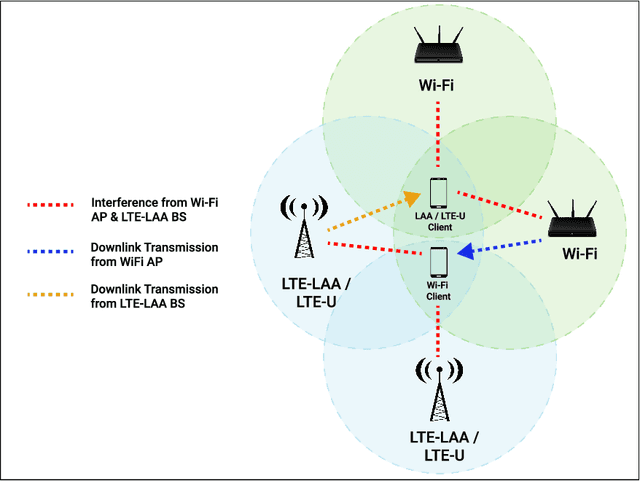
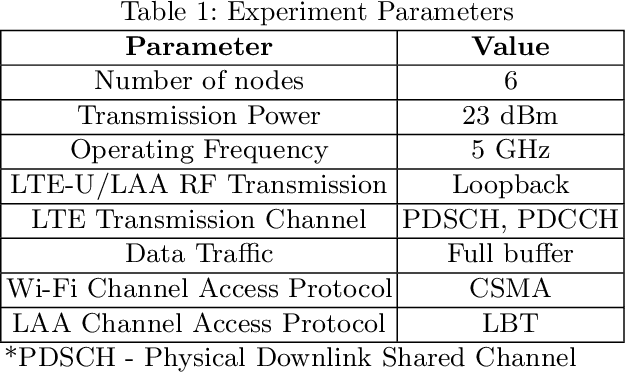
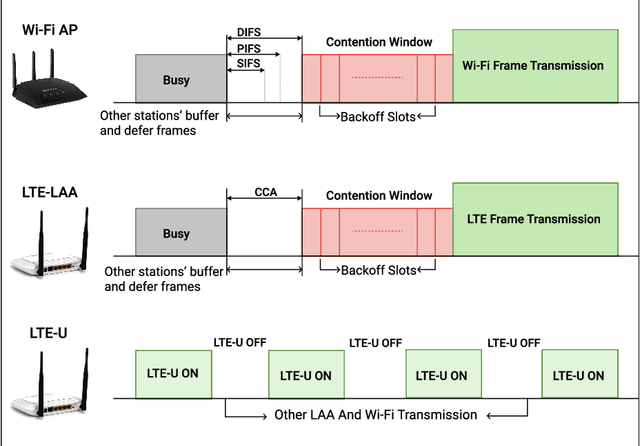
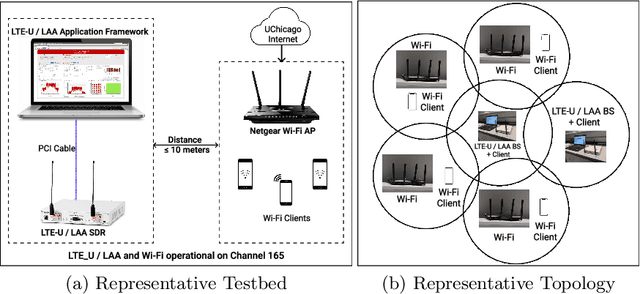
Abstract:Unlicensed LTE-WiFi coexistence networks are undergoing consistent densification to meet the rising mobile data demands. With the increase in coexistence network complexity, it is important to study network feature relationships (NFRs) and utilize them to optimize dense coexistence network performance. This work studies NFRs in unlicensed LTE-WiFi (LTE-U and LTE-LAA) networks through supervised learning of network data collected from real-world experiments. Different 802.11 standards and varying channel bandwidths are considered in the experiments and the learning model selection policy is precisely outlined. Thereafter, a comparative analysis of different LTE-WiFi network configurations is performed through learning model parameters such as R-sq, residual error, outliers, choice of predictor, etc. Further, a Network Feature Relationship based Optimization (NeFRO) framework is proposed. NeFRO improves upon the conventional optimization formulations by utilizing the feature-relationship equations learned from network data. It is demonstrated to be highly suitable for time-critical dense coexistence networks through two optimization objectives, viz., network capacity and signal strength. NeFRO is validated against four recent works on network optimization. NeFRO is successfully able to reduce optimization convergence time by as much as 24% while maintaining accuracy as high as 97.16%, on average.
Evolution of Small Cell from 4G to 6G: Past, Present, and Future
Dec 29, 2020

Abstract:To boost the capacity of the cellular system, the operators have started to reuse the same licensed spectrum by deploying 4G LTE small cells (Femto Cells) in the past. But in time, these small cell licensed spectrum is not sufficient to satisfy future applications like augmented reality (AR)and virtual reality (VR). Hence, cellular operators look for alternate unlicensed spectrum in Wi-Fi 5 GHz band, later 3GPP named as LTE Licensed Assisted Access (LAA). The recent and current rollout of LAA deployments (in developed nations like the US) provides an opportunity to understand coexistence profound ground truth. This paper discusses a high-level overview of my past, present, and future research works in the direction of small cell benefits. In the future, we shift the focus onto the latest unlicensed band: 6 GHz, where the latest Wi-Fi version, 802.11ax, will coexist with the latest cellular technology, 5G New Radio(NR) in unlicensed
Machine Learning enabled Spectrum Sharing in Dense LTE-U/Wi-Fi Coexistence Scenarios
Mar 18, 2020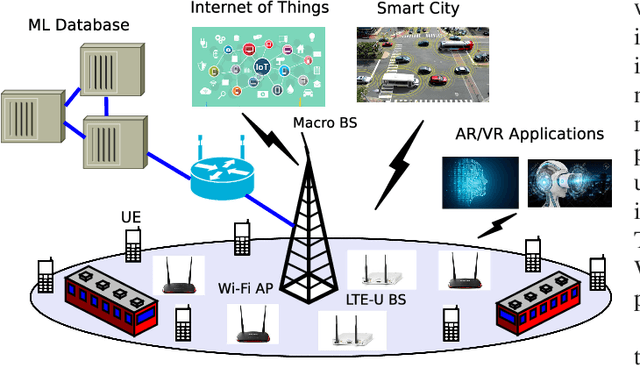
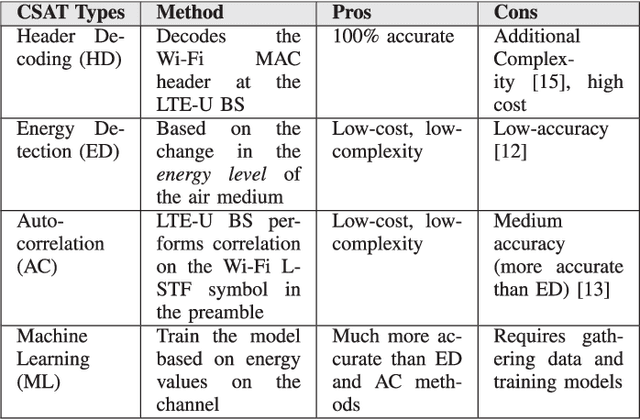
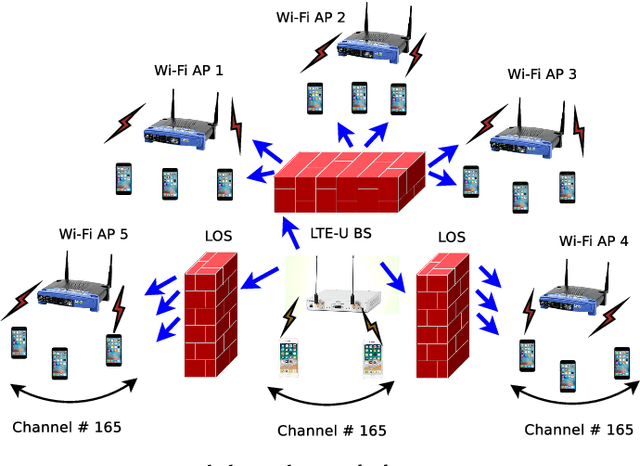
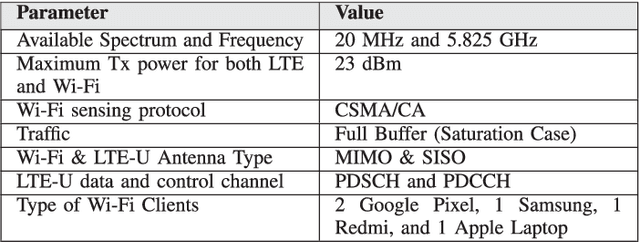
Abstract:The application of Machine Learning (ML) techniques to complex engineering problems has proved to be an attractive and efficient solution. ML has been successfully applied to several practical tasks like image recognition, automating industrial operations, etc. The promise of ML techniques in solving non-linear problems influenced this work which aims to apply known ML techniques and develop new ones for wireless spectrum sharing between Wi-Fi and LTE in the unlicensed spectrum. In this work, we focus on the LTE-Unlicensed (LTE-U) specification developed by the LTE-U Forum, which uses the duty-cycle approach for fair coexistence. The specification suggests reducing the duty cycle at the LTE-U base-station (BS) when the number of co-channel Wi-Fi basic service sets (BSSs) increases from one to two or more. However, without decoding the Wi-Fi packets, detecting the number of Wi-Fi BSSs operating on the channel in real-time is a challenging problem. In this work, we demonstrate a novel ML-based approach which solves this problem by using energy values observed during the LTE-U OFF duration. It is relatively straightforward to observe only the energy values during the LTE-U BS OFF time compared to decoding the entire Wi-Fi packet, which would require a full Wi-Fi receiver at the LTE-U base-station. We implement and validate the proposed ML-based approach by real-time experiments and demonstrate that there exist distinct patterns between the energy distributions between one and many Wi-Fi AP transmissions. The proposed ML-based approach results in a higher accuracy (close to 99\% in all cases) as compared to the existing auto-correlation (AC) and energy detection (ED) approaches.
Machine Learning based detection of multiple Wi-Fi BSSs for LTE-U CSAT
Nov 21, 2019
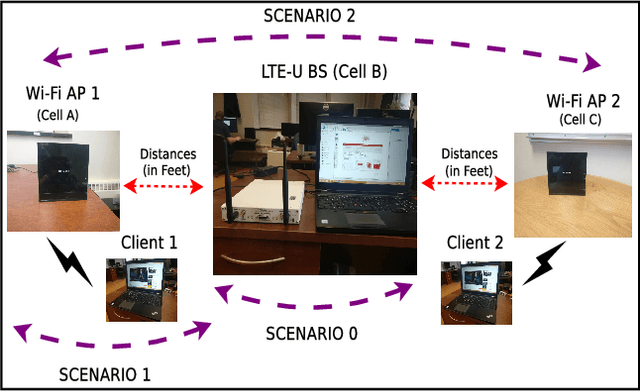
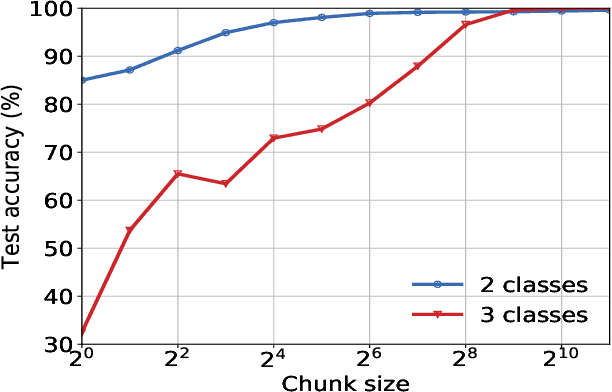
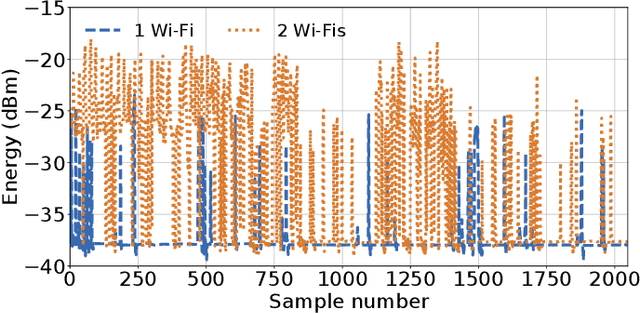
Abstract:According to the LTE-U Forum specification, a LTE-U base-station (BS) reduces its duty cycle from 50% to 33% when it senses an increase in the number of co-channel Wi-Fi basic service sets (BSSs) from one to two. The detection of the number of Wi-Fi BSSs that are operating on the channel in real-time, without decoding the Wi-Fi packets, still remains a challenge. In this paper, we present a novel machine learning (ML) approach that solves the problem by using energy values observed during LTE-U OFF duration. Observing the energy values (at LTE-U BS OFF time) is a much simpler operation than decoding the entire Wi-Fi packets. In this work, we implement and validate the proposed ML based approach in real-time experiments, and demonstrate that there are two distinct patterns between one and two Wi-Fi APs. This approach delivers an accuracy close to 100% compared to auto-correlation (AC) and energy detection (ED) approaches.
 Add to Chrome
Add to Chrome Add to Firefox
Add to Firefox Add to Edge
Add to Edge